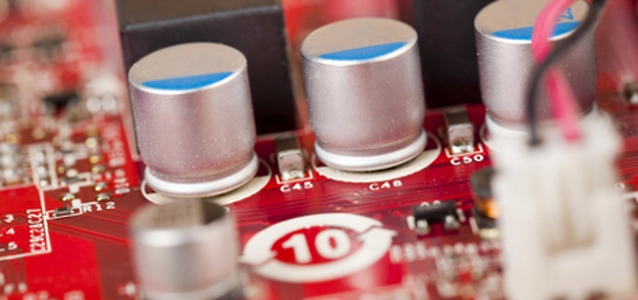
© franz schloegl dreamstime.com
Business |
Mobile devices to consume more DRAM than traditional PCs in 2015
For a generation now, the PC and DRAM industries have been tied together as tightly as the automotive and crude oil businesses.
However, in a telling sign of the arrival of the post-PC era, mobile platforms for cellphones as well as media- and PC-type tablets are on the verge of overtaking traditional desktops, notebooks and servers as the biggest consumer of DRAM.
In 2015, the mobile devices will use $11.6 billion worth of dynamic random access memory (DRAM), according to a DRAM Dynamics Brief from information and analytics provider IHS (NYSE: IHS). Such a level compares to $9.9 billion for conventional PCs, as presented in the attached figure. In all, this will mark the first time ever that the mobile platforms have accounted for the majority of DRAM consumption—and the first time since the 1980s that traditional PCs haven’t led in the area.
“The fortunes of the PC and DRAM industries have been intricately intertwined for 30 years now,” said Dale Ford, senior director at IHS. “DRAM makers have centered their technology, capacity and product strategies on the needs of their PC customers. At the same time, the performance of the DRAM business has been dependent on upturns and downturns in the PC market. But with the decline of the PC market and rise of wireless platforms, this alignment is coming to an end.”
The demise of the PC industry’s hegemony in the DRAM market reflects a broader trend throughout the electronics business, spurred by the arrival of the post-PC era.
“The post-PC era is already a reality in the electronics supply chain,” Ford noted. “This new era doesn’t mean that consumers and companies will stop buying and using traditional personal computers. What this does mean is that PCs are not at the center of the technology universe anymore. PCs are no longer driving the action in the global electronics supply chain—a development that has tremendous implications for the future of the high-tech industry.”
Similar trends to the DRAM market are occurring in other areas, with traditional PCs seeing their dominance over demand and technology development erode in the storage, display, software and overall semiconductor markets.
IHS in 2012 noted that the share of traditional PCs in DRAM revenue fell to less than 50 percent for the first time in at least 30 years, marking a major milestone for the industry. While the share of PCs in DRAM consumption fell to 41 percent in 2012—far below the 85 to 65 percent share seen throughout the 1980s, 1990s and 2000s—PCs remained the largest single DRAM market.
However, the newest findings from IHS show that PCs will lose that distinction in 2015. Furthermore, their share of total DRAM sales will fall to 30 percent in 2014, to 28 percent in 2015 and 23 percent in 2016, down from 38 percent in 2013. By 2017, traditional PCs will account for only 22 percent of DRAM consumption.
A small silver lining
The news is not all bad for PCs, because a significant portion of the mobile market in the coming years will consist of PC-type tablets. These tablets are touch-enabled devices that have a tablet form factor but run a PC-type operating system—specifically Windows from Microsoft Corp.
However, even here there are some downsides for PC makers.
For one, shipments of PC tablets will be considerably smaller than those of media tablets, at least through 2017. Furthermore, buyers of PC tablets will use them to replace traditional clamshell-type notebooks, not media tablets. This means that PC tablets will not help PC makers reclaim market share lost to media tablets.
DRAM industry repercussions
With the major consolidation in the DRAM industry, the small number of surviving suppliers of the memory now may be better equipped to deal with the rising importance of mobile platforms than they were before.
“Mobile DRAM is more difficult to get right than the commodity DRAM used in PCs,” said Mike Howard, senior principal analyst for DRAM and memory at IHS. “Large companies with extensive R&D resources to develop multiple products tend to do better in the mobile DRAM market. It’s no surprise that semiconductor giant Samsung controls nearly 60 percent of the mobile DRAM market.”



